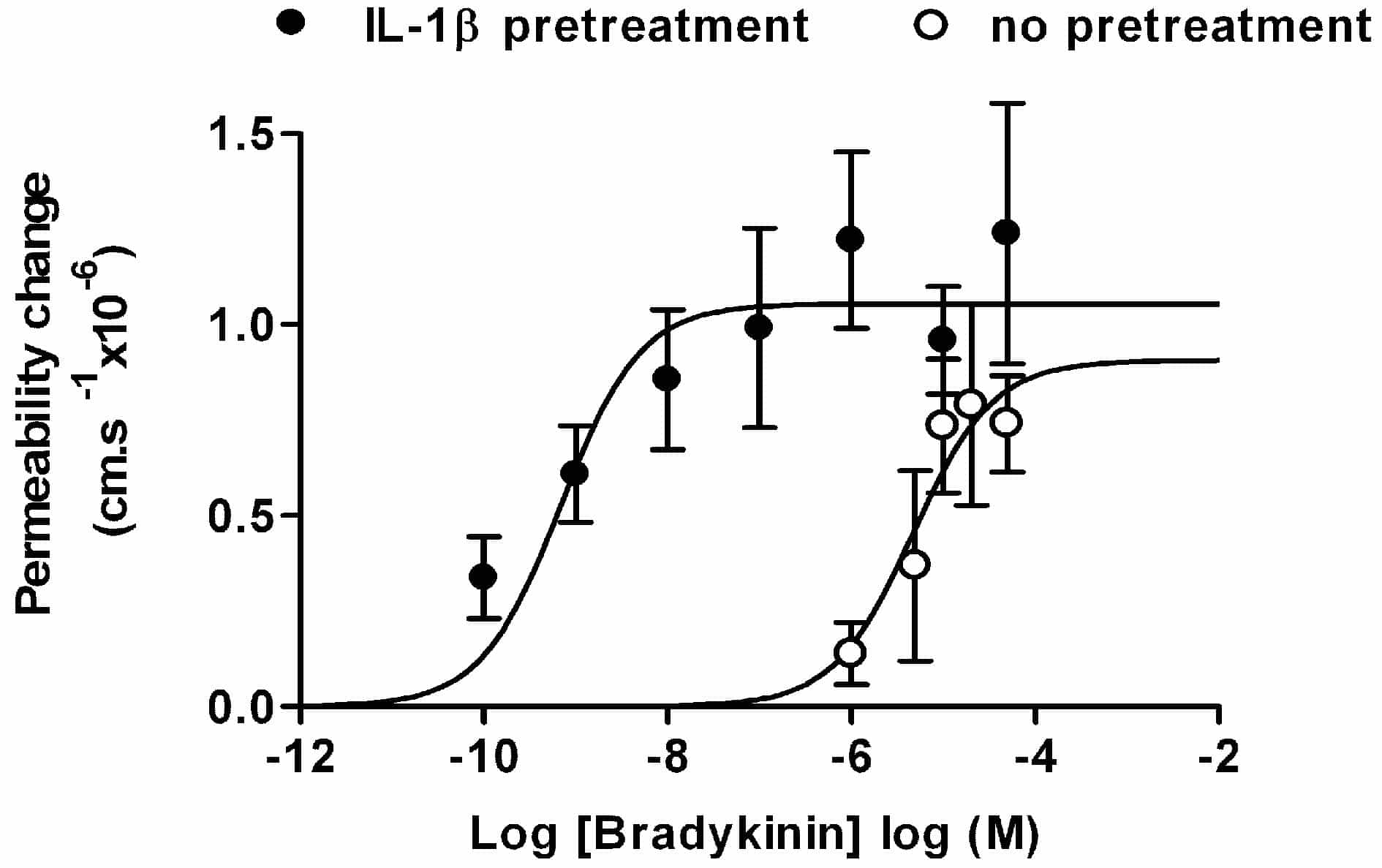Previous work has shown that pial venular permeability increase mediated by bradykinin is potentiated by IL-1β within 10 min. of its application with further potentiation after 30 min. (Hu & Fraser, 1997). The bradykinin B2 receptor on pial venular capillaries activates PLA2, and the resulting arachidonic acid forms free radicals following its interaction with cyclooxygenase and lipoxygenase (Sarker et al. 2000). The subsequent lipid peroxidation of the plasma membrane is thought to result in calcium entry. IL-1β will activate PLA2 in bronchial smooth muscle (Schmidlin F. et al. 2000), and it is possible that a pathway coincidence in this endothelium results in the observed potentiation.
The permeability (PRh) to sulforhodamine dye (588 Da) of single venular capillaries of rats (anaesthetized with hypnorm/hypnoval: 10 mg kg-1 I.P., and humanely killed at the end of the experiments) was measured as previously described (see Sarker et al. 2000). Application of with IL-1β (30 pM) resulted in a potentiation of the PRh response to Bk within 10 min, which remained stable in the presence of cycloheximide (100 ÁM) for up to 90 min. IL-1β pretreatment had little effect on the maximum PRh, but shifted the dose-response relationship considerably leftward (see Fig. 1). PRh was free radical dependent, as combination of superoxide dismutase and catalase (each 100 U ml-1) reduced the response to 5 ÁM Bk from 0.82 ± 0.134 cm s-1 X 106 (mean ± S.E.M.) to 0.20 ± 0.32 (n = 4, P < 0.01, paired t test). The idea that PLA2 activation provides a coincidence in the signalling pathways was tested by blocking this with palmitoyl trifluoromethyl ketone (100 µM) in paired experiments. The maximum response was reduced by 62 ± 15 % (n = 8), but with little change in EC50. The possibility that IL-1β promotes NADPH oxidase assembly was tested by applying diphenylene iodonium chloride (DPI, 100ÁM), and this reduced PRh by 48 ± 4 % (n = 8). As DPI had no effect on PRh to Bk without IL-1β pretreatment (Bk alone 1.05 ± 0.125, with DPI 1.10 ± 0.07, n = 8), it is likely that IL-1β can cause rapid NADPH oxidase assembly.
This work was supported by the British Heart Foundation.

